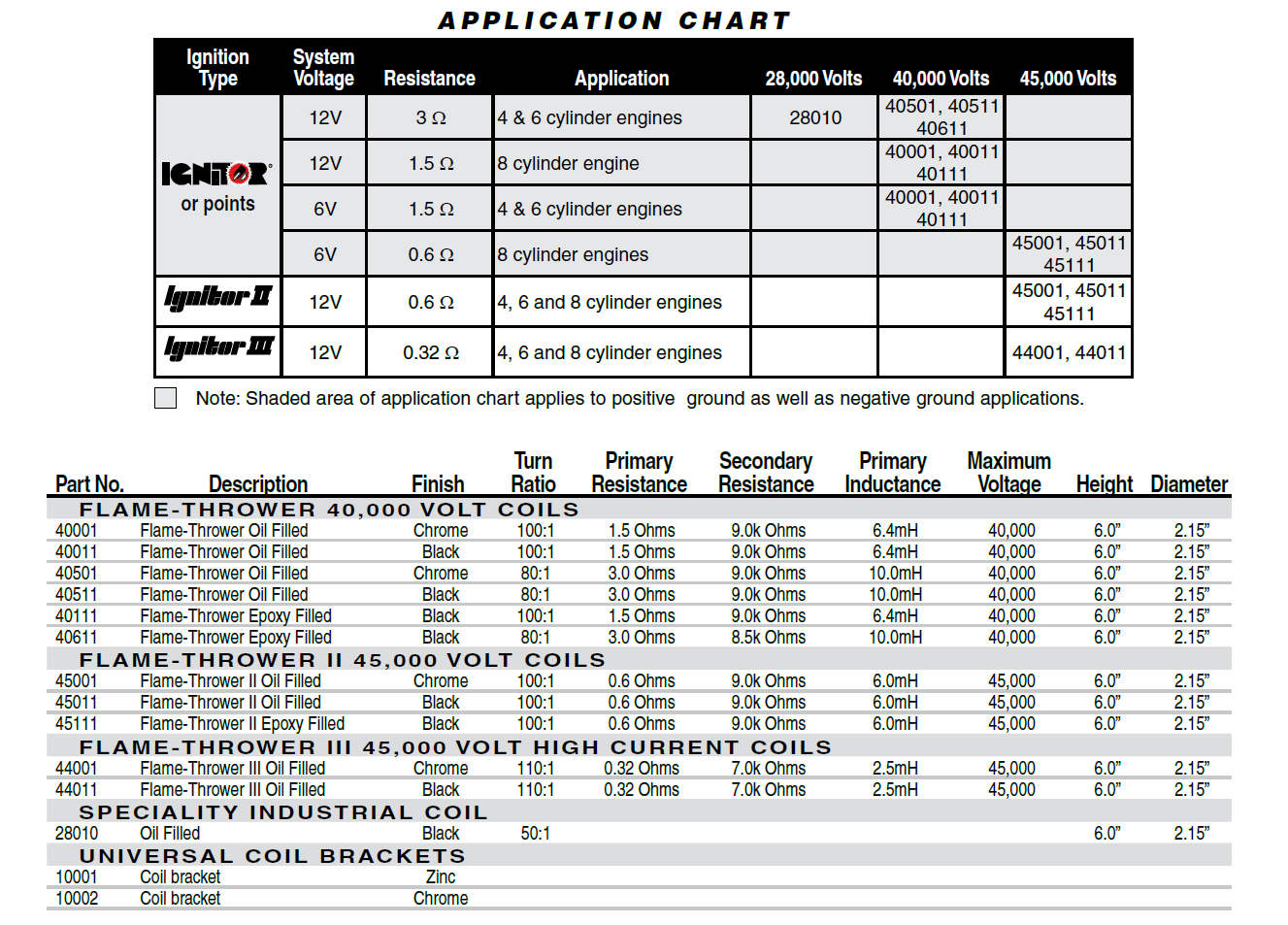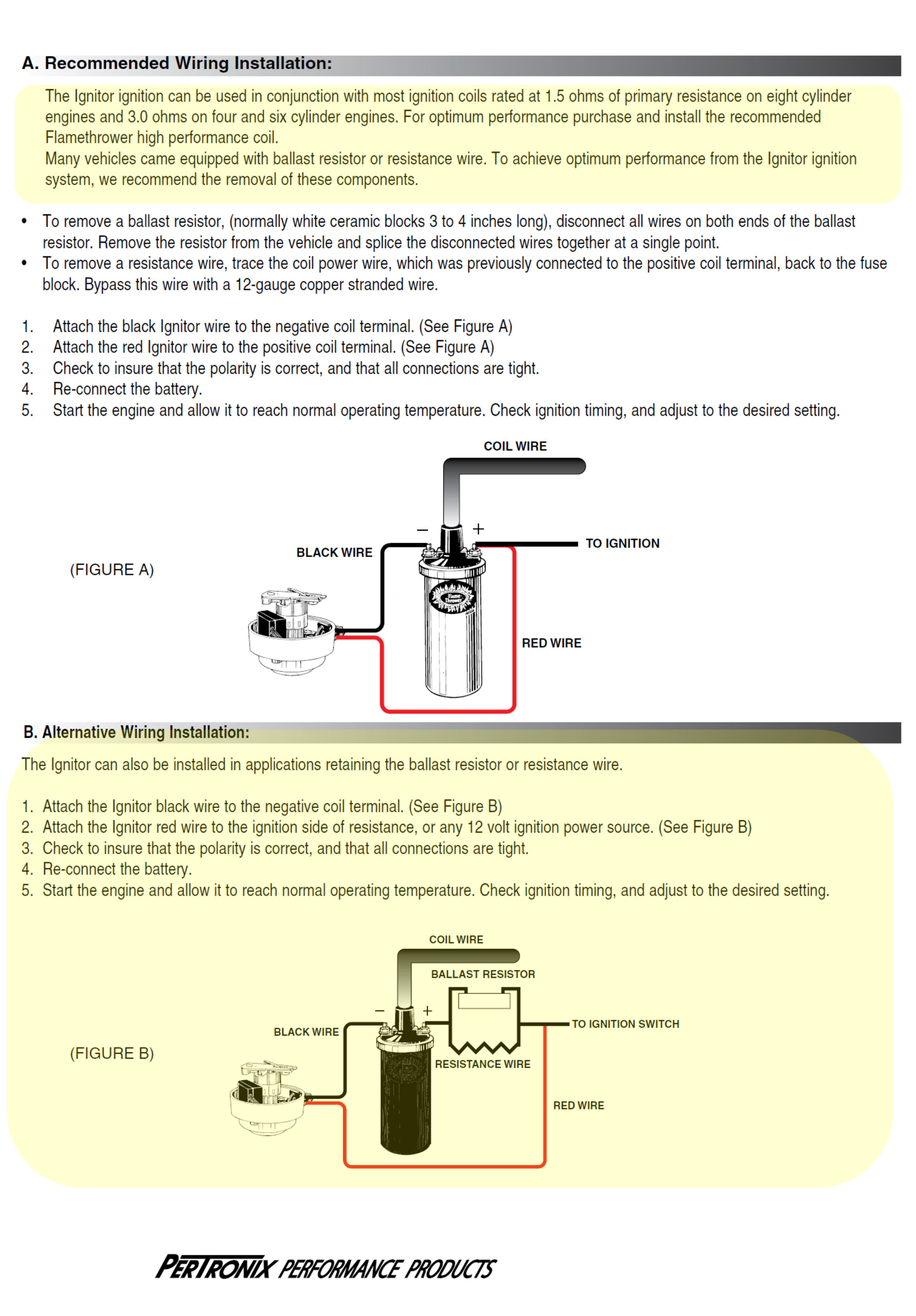Page 2 of 2
Re: Ignitor or Ignitor II
Posted: Thu Dec 21, 2023 8:43 am
by joelsplace
Also Frank, others and myself are following the original instructions just not the revised ones.
Re: Ignitor or Ignitor II
Posted: Thu Dec 21, 2023 11:42 pm
by bbodie52
Yeah — when the manufacturer gets enough questions and consumer feedback to warrant a revision in the installation instructions, why would you want to consider that update from the Pertronix engineering and design team?
Frank DuVal wrote: » Thu Dec 21, 2023 10:33 am
I am ignoring instructions that do not apply to my Corvairs. I am following the years of successful use of Pertronix Ignitor (1) in thousands of Corvairs with NO modification of engine harness. Lon started selling these in the early 80s IIRC. Why do you insist thousands of people are wrong when their cars run fine?
And the Flamethrower coils have a high failure rate compared to original coils. I have replaced only a handful over the years that failed. Sure I used to buy new ones hoping for a performance improvement, that never came about, until I learned how these Kettering systems worked.
After all... why would you consider direct feedback to Pertronix from consumers and Pertronix' subsequent effort to clarify the installation instructions that is intended to improve consumer satisfaction???? Better to only listen to those rumored "thousands of Corvair owners" out there!
Some technical research into ignition coil functional design and a careful review of the Pertronix instructions makes sense of their reasons for recommending a direct 12VDC feed to the coil that is physically adjacent to the distributor — and their recommended 3.0 ohm coil for use in 4 and 6-cylinder engine applications. The Pertronix 3 ohm coil has the same total nominal Primary resistance that was originally installed in the Corvair (external ballast resistor plus Delco Primary internal coil resistance). Four and six-cylinder engines have fewer distributor cam lobes than a V8, so the time duration of each ignition coil charging cycle at any given engine RPM before discharge would be longer than with a V8 distributor. That additional charging time after the coil Primary has reached saturation of the magnetic field simply means heat buildup in the Primary winding — which can translate into higher coil internal heat buildup that can shorten the operational lifespan of the ignition coil. I believe that Pertronix engineers took that into account when they recommended a bypass of the factory ballast resistor to satisfy the needs of the Ignitor or Ignitor II electronic ignition module internal design. The associated use of a 3.0 ohm coil with 4 and 6-cylinder engines would reduce coil heat buildup while still achieving full Primary coil saturation to support the ignition spark plug voltage needs of the 4 or 6-cylinder engine. The 12-14VDC power feed to the ignitor electronic module internal components puts the power feed voltage right in the middle of the input voltage range tolerance — instead of near or below the lowest design tolerance. Both of these Pertronix-recommended installation guidelines gives the installer the highest probability of achieving a successful, trouble-free installation of the Pertronix upgrade.
Their alternate diagram considers the possibility that the consumer will purchase and install the Ignitor distributor upgrade only, while retaining the original Delco factory coil. It that case their alternate diagram retains the GM external ballast resistor wire for the associated Delco coil, while displaying a fairly simple resistor wire bypass for the ignitor module ONLY.


Re: Ignitor or Ignitor II
Posted: Fri Dec 22, 2023 10:19 am
by Frank DuVal